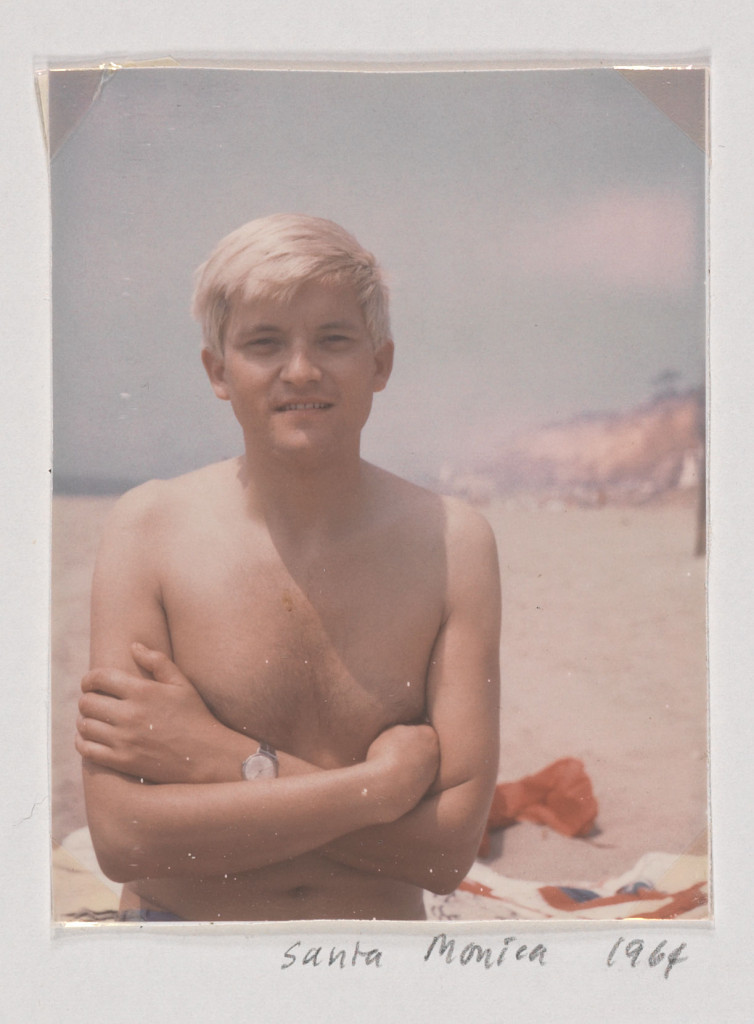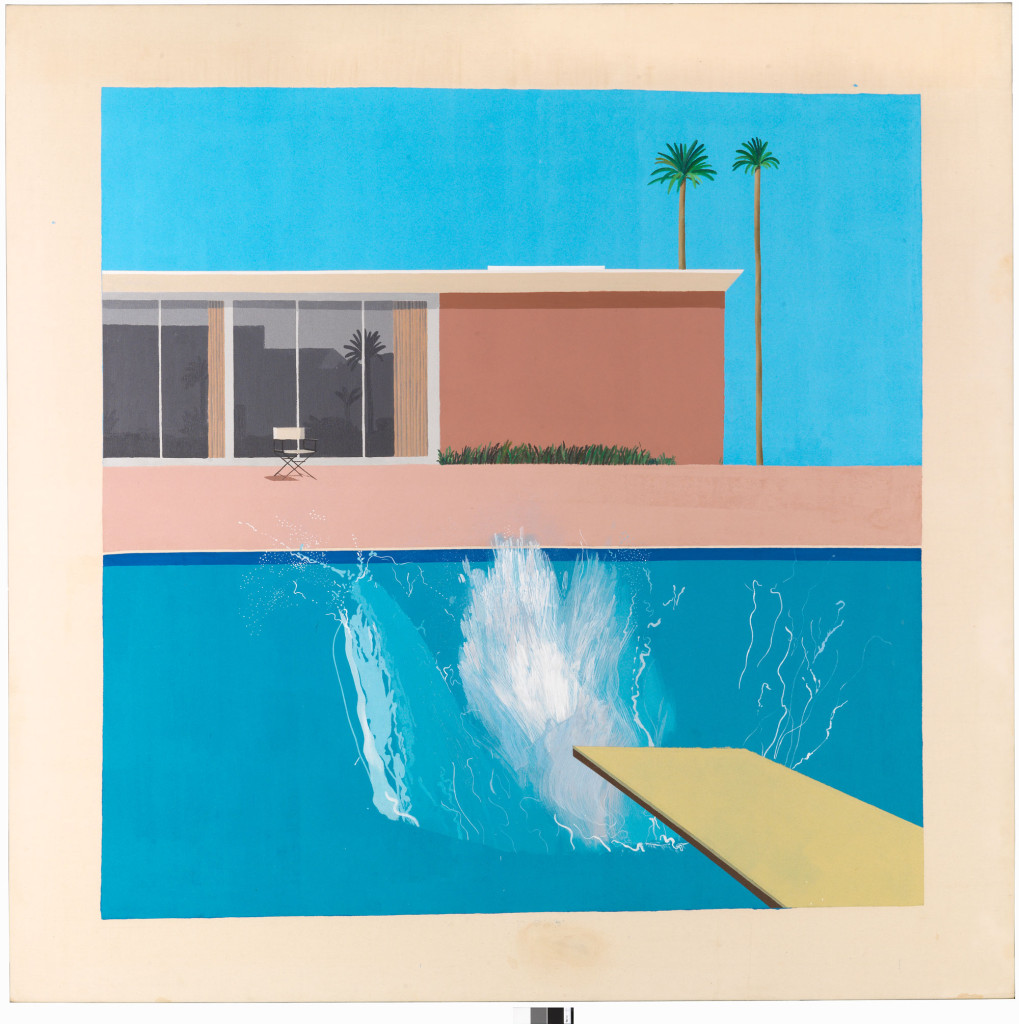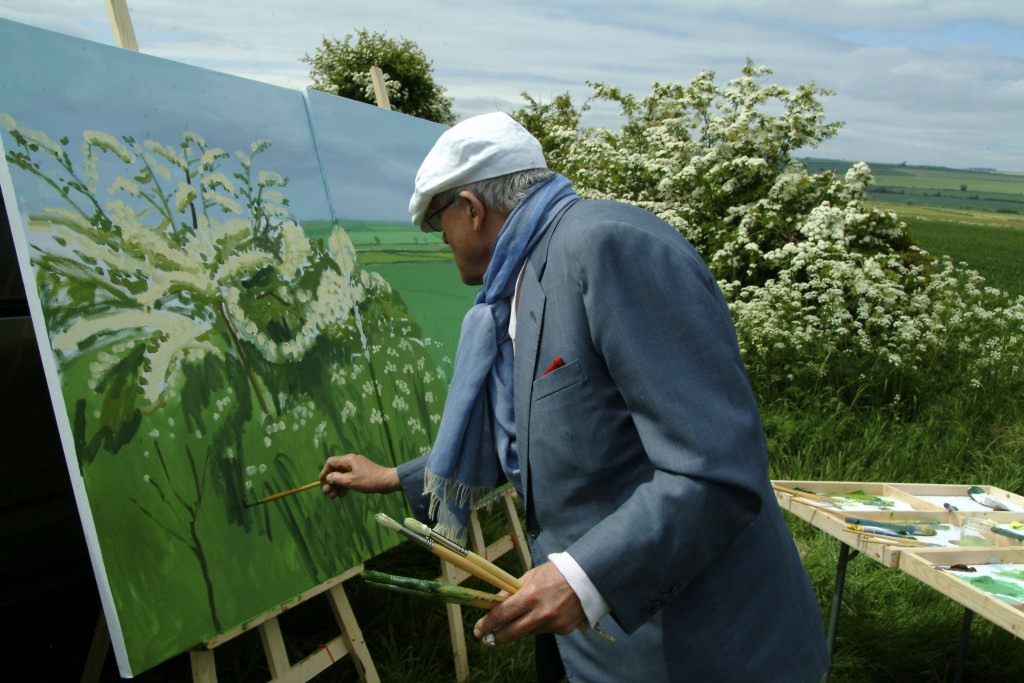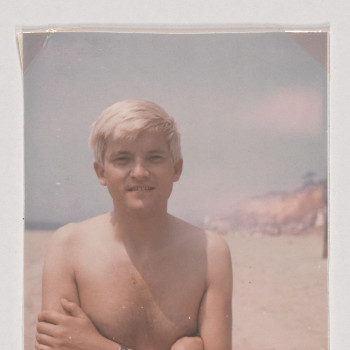Each week on Chattering Class, we’re schooled by an expert in some party-worthy topic. Today’s subject: David Hockney — one of the most influential artists of the 20th century. And our teacher is Randall Wright. He has directed a new eponymous documentary about the artist. In it, he explores the life of the man behind those iconic paintings of swimming pools and the good life of Los Angeles. The film is made up of interviews with Hockney himself, images from his career, and footage from Hockney’s never-before-seen home movies.
So what was it like to work so closely with the subject of his documentary? “One of the moments when I realized quite, you know, what an extraordinary man he was… [David Hockney and I] were in London, and he bent down, picked up a little flower, and he held it — one hand with a thick, smoldering Camel cigarette, other hand with a little flower,” Randall explained to Brendan. “And he stood there motionless, just staring at this flower, and then turned round to me and said, ‘I haven’t seen that shade of blue for years.'”
“It was an amazing moment because he genuinely hadn’t seen it for years,” Randall added. “He looked so carefully at blue, that he appreciates a blue that turns up only every so often. So, he’s wanting to be distracted by beauty, which may indicate there’s trouble somewhere else in his mind, and he wants something else. But it’s just a sort of delightful way to live.”
Interview Highlights:
On how Bradford, England and Los Angeles, California influenced Hockney and his aesthetic

I think they’re both incredibly interesting and exciting places to David. He’s born in Bradford. Bradford, then, was an amazing place, actually. It had an incredible library, gallery, it was a very, kind of, civilized place. On the other hand, it was a tough place, a kind of narrow-minded place, perhaps. It was a place where you couldn’t be gay. It was a place where you couldn’t easily do modern art. And so, it was a place to escape from.
So, he escaped to London. And then, this wunderkind is suddenly there in British society, and everybody adores him. He’s one of those artists who became, you know, a success, like a Beatle. He was in every color magazine and right from the beginning, people were paying relatively high sums for his work.
Then, what Hockney did was he kept more than one place going. He left himself with options. He loved his family and wanted to go back to Yorkshire. He also had a studio in London, by the way, and he had a home studio in Los Angeles. And essentially, the freedoms that Los Angeles offered him were the ones that became a catalyst for his greatest achievements.
On the defining traits of a Hockney painting
In David’s art, if you go back and look at “A Bigger Splash,” I think there are two things at work very often. One is the representation of the surface of things the beautiful surface, the possibility that you could dive into the pool, that someone’s already dived in. It’s a beautiful day. It’s a warm day.
But, at the same time, the person who’s dived in the water will never come to the surface. You don’t see the body; you see the displaced water. And there’s a kind of strange detachment in the work. You know, the possibility, the vision is at one remove.

And I think, if you look at a lot of David’s work, it has that quality. The sense of detachment is a very genuine part of the power of those pictures. He is somebody who has always, I think, looked for a kind of an ideal life, and he’s very attracted to the artist’s life.
He’s always searching for this, but if you look very carefully at the work, there’s a sort of feeling underneath the surface that he’s not actually finding it, and the reason he keeps looking for it is that he refuses to give in. You know, he will enjoy what life offers.
On what it is about Hockney that captures Randall’s imagination
I’ve been influenced by David a large part of my life, since 1976 — I was, whatever, I was 14 or something — I hope I wasn’t older. Anyway, in 1976, there was a book appeared on our bookshelves, which was “Hockney on Hockney.” And it was mind-blowing because here was someone who could draw.
It’s a very, very rare skill, and it may be there are lots of other fantastic ways of making art, but in a way, if you make your body an amazing machine to record what you see and what you feel at the same time, then you’re able to express ordinary experience in a very, very special way. And David does that, and, in that, is a kind of faith that life is actually out there. You can touch it. You can see it; you can touch it; you can smell it. You can enjoy life. It’s there.

And I think he was very consciously trying to show us what the possibility in life is. I think a lot of his art is about the possibility of love, the possibility that we don’t have to be cynics. You know, we don’t have to waste our time belonging to a group against another group, you know, that there’s ways of drawing people together.
By the way, I hope this doesn’t mean I’m… I’m hopelessly romantic, myself, about it all. But I do think it’s true.

IT’S A PARTY IN YOUR INBOX…
…when you subscribe to our weekly newsletter. You’ll find all sorts of good stuff there like bonus audio, musings on culture from our staff, photos of our guests and co-hosts being ridiculous, and new cocktail recipes. Sign up below!


